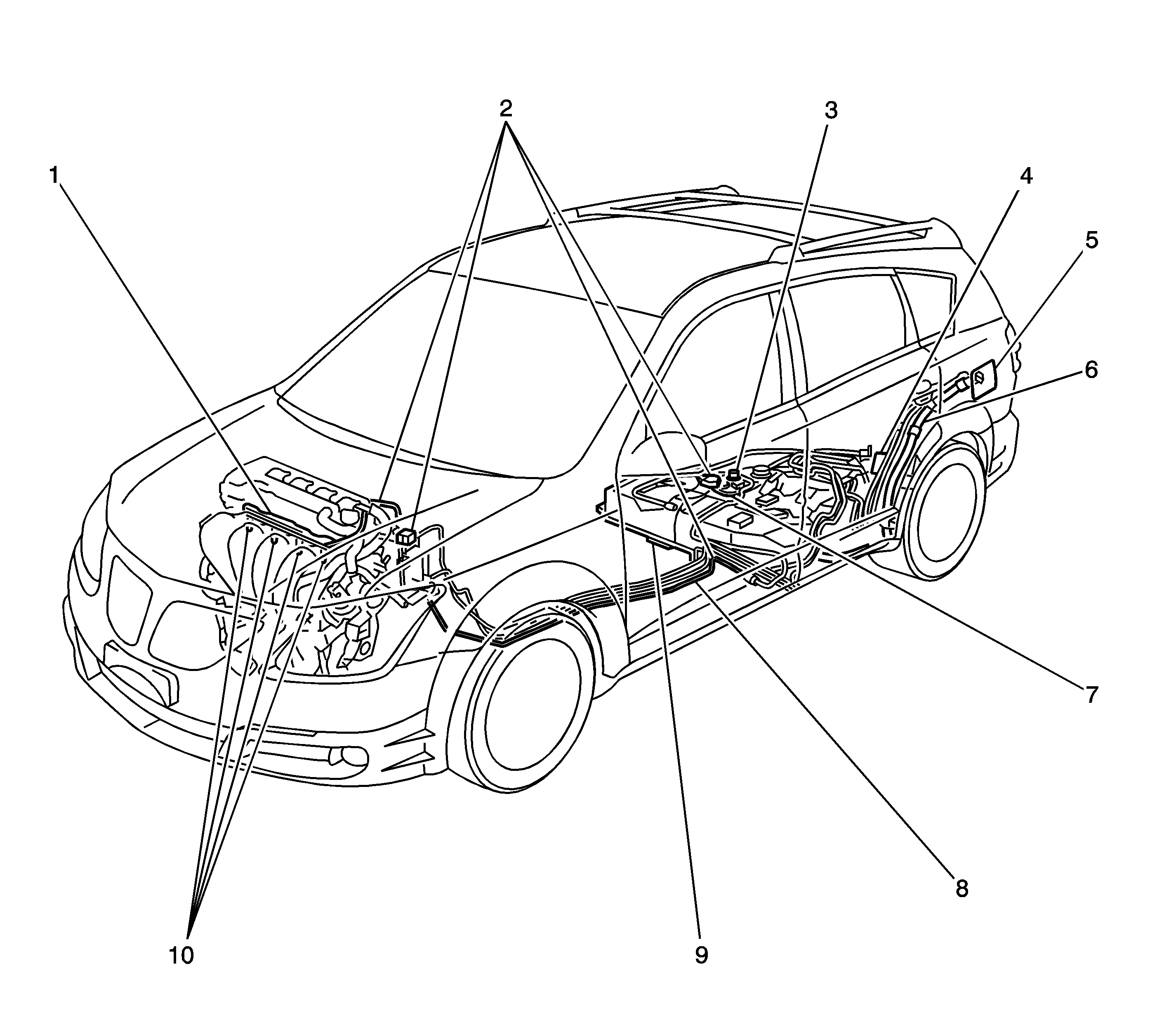The fuel tank is a composite design with a storage capacity of 49 liters (13 gallons). The composite construction is made of several layers of materials. The outside and inside layers are a high density polyethylene, with a center layer of
recycled material and ethylene vinyl alcohol copolymer. The fuel tank is located behind the rear seat area. The tank is held in place with 2 straps that are secured with bolts. The shape of this tank was designed to allow for a constant supply of fuel around
the fuel pump strainer during low fuel conditions and also during aggressive vehicle maneuvers. The fuel inlet port on the tank is equipped with an inlet valve. This fuel tank inlet valve prevents the fuel from spewing into the fuel filler neck during aggressive
vehicle maneuvers or vehicle rollovers. The fuel tank is equipped with an on-board refueling vapor recovery (ORVR) system.
In order to prevent refueling with leaded fuel, the fuel filler neck has a built-in restrictor and deflector. The opening of the restrictor admits only the smaller unleaded fuel nozzle. The nozzle must be fully inserted to bypass the deflector. Any attempt
at refueling with leaded fuel will result in fuel splashing out of the filler neck.
The fuel filler cap is an updated version of the screw thread design. This latest version of the screw on cap provides only one click with a firm stop, when the cap is correctly installed. Tightening the fuel cap until the one click is heard assures a
sealed fuel system. The fuel cap is a pressure-vacuum type operation. To install the cap, turn the cap clockwise until the cap stops and the one click is heard. This indicates that the fuel filler cap gasket (1) is fully seated.
A vacuum relief valve is incorporated into the fuel filler cap. If the pressure in the fuel tank becomes negative (vacuum), the relief valve opens to relieve the pressure created within the fuel tank. Only when the vacuum becomes excessive within the tank
does this occur. Vacuum pressure is also vented through the tank pressure control valve which is located on the top of the fuel tank.
A pressure relief valve is also located in the fuel filler cap. The pressure of the fuel vapor within the tank should exceed that for which the fuel system is designed, the pressure relief valve opens, and the excess pressure is vented to the atmosphere.

